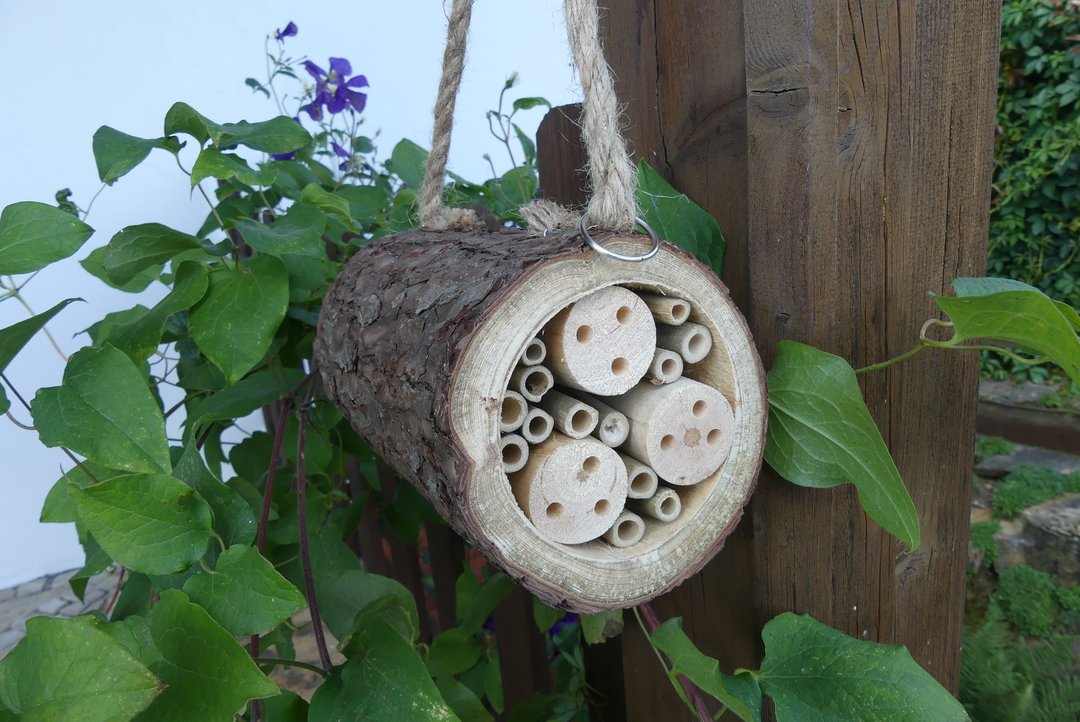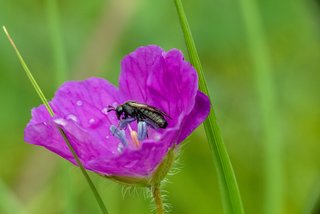The ideal time to set up a nesting aid for wild bees is in late winter or early spring. During this time, many wild bee species begin to actively search for suitable nesting sites to create their brood cells. Marina Moser, Sonia Bigalk and Sebastian Görn, entomologists at the Stuttgart Natural History Museum, have put together some FAQs for you about wild bee hotels and ideal nesting aids.
- Why is the term "wild bee hotel" actually incorrect?
- What is the difference between wild bees and honey bees?
- And what about the bumblebees?
- What does a perfect nesting aid look like?
- How do I build a nesting aid?
- Help, my nesting aid is not being colonised – what should I do?
- Help, my nesting aid is being colonised by others – what should I do?
- Do I need to clean my nesting aid?
- What else needs to be considered?
- Are nesting aids the solution to bee decline?
- What else can I do to help wild bees?
- Can wild bees sting?
- I would like to find out more about how I can support wild bees. Where can I find good information?











Comments (0)
No Comments